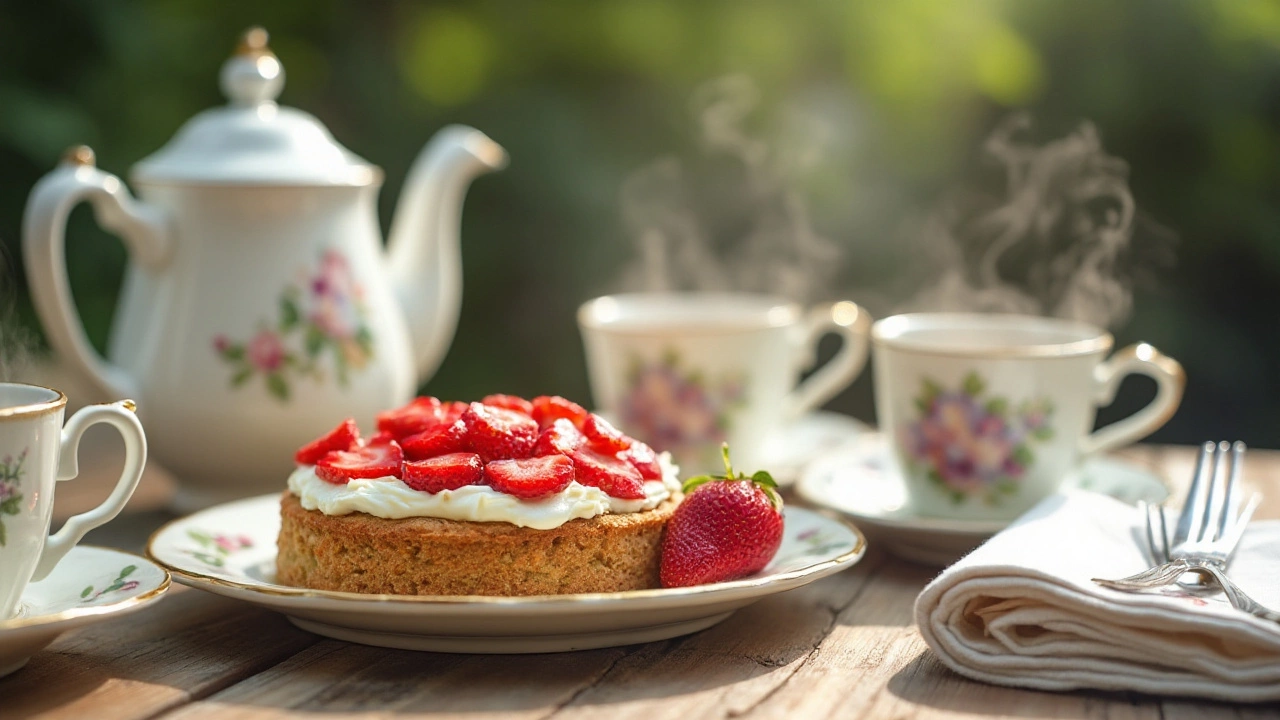
In the delightful world of baking, oats are often hailed as a wholesome ingredient known for their nutritional benefits. However, when it comes to gluten-free baking, there's often confusion hovering around oats. Are they really as gluten-free as we think?
While oats in their purest form do not contain gluten, the real challenge lies in ensuring they're not tainted by gluten-containing grains during the growing and processing stages. This potential for cross-contamination is a critical factor for those with gluten sensitivities.
This article aims to shed light on this topic, offering insights into how you can enjoy oats in a gluten-free lifestyle without worry. We'll navigate through the world of oats, uncover the truth behind their gluten content, and provide handy tips for baking delectable gluten-free cakes with oats.
- Understanding Oats and Gluten
- Cross-Contamination Concerns
- Shopping for Gluten-Free Oats
- Tips for Baking Gluten-Free Cakes
Understanding Oats and Gluten
Oats have long been cherished by health enthusiasts for their high fiber content and protein-related benefits, but what about their relationship with gluten? By nature, oats (Avena sativa) do not contain gluten, a fact that might come as a surprise to those navigating a gluten-free diet. Gluten, which is a mixture of proteins found in wheat, barley, and rye, is notorious for causing discomfort or allergic reactions in those with celiac disease or gluten sensitivity. It creates that stretchy texture in dough, making bread chewy and pasta firm. Oats provide none of these properties, focusing instead on providing a gentle, nutritional boost.
However, the issue arises not from the oats themselves but from the processes involved in growing and harvesting them. You see, oats are often grown in close proximity to wheat, barley, and rye, leading to cross-contamination. The equipment used in harvesting, transporting, and processing oats is frequently the same, which can result in trace gluten contamination. This risk is why it's important for those who must avoid gluten to look for certified gluten-free oats, which are grown and processed with rigorous protocols to avoid such contamination.
In the past, concerns about oats extended even to their nutrient profile and digestibility in those with celiac disease. Studies, however, like those from the National Institutes of Health, have shown that many people with gluten-related disorders can safely include moderate amounts of oats in their diets. Professor Carlo Catassi, a prominent figure in celiac disease research, once remarked,
“The main precaution with oats is the source. Ensuring they are uncontaminated is key to their safe inclusion in a gluten-free diet.”
Adding oats to a gluten-free diet can enhance variety and provide essential nutrients that might be missing otherwise. They are rich in beta-glucans which support heart health, and they boast a high soluble fiber content capable of aiding digestion. Their unique texture and subtle flavor make oats a popular choice in gluten-free baking, especially in creating moist, delicious cakes. But remember, if the oats aren't labeled as gluten-free, the risk of contamination remains, which is an important factor to consider for anyone maintaining strict dietary restrictions due to gluten.

Cross-Contamination Concerns
The journey of oats from the field to your plate is fraught with potential pitfalls, particularly when considering cross-contamination with gluten-containing grains like wheat, barley, and rye. While oats themselves are naturally gluten-free, the environment in which they are grown and processed often leads to contamination. Imagine fields that have previously hosted wheat crops or processing facilities that handle multiple types of grains. The risk of trace gluten makes it challenging for those seeking truly gluten-free oats for their diets or recipes.
Many people are unaware of how prevalent cross-contamination can be. During farming, oats may share fields or farm equipment with gluten-laden grains. This certainly becomes a considerable issue considering that even tiny amounts of gluten can provoke reactions in individuals with celiac disease or severe gluten sensitivities. A study conducted by the University of Nebraska found that approximately 20% of regular oats are cross-contaminated with levels of gluten that exceed the necessary limits for those intolerant.
In an effort to combat this, specialized growth and processing protocols have been developed to produce oats that can be certified as gluten-free. These protocols involve isolating fields, implementing rigorous cleaning processes for equipment, and conducting regular inspections and tests for gluten contamination. It is only through these measures that certain brands are able to assure customers of their gluten-free oats. To put it into numbers, the allowed gluten threshold set by U.S. FDA is 20 parts per million (ppm), which these dedicated oats strive to abide by and, often, fall below.
With these precautions in place, labeled gluten-free oats are generally safe for those with a gluten intolerance to consume. Not all oats, however, receive these same corrective measures, and therein lies the public's misgivings about oat safety. It's essential for consumers to seek out oats that bear the gluten-free certification. These certifications are incredibly valuable, as they provide verification that the product has met stringent standards designed to eliminate gluten exposure. Experts often stress that choosing oats backed by a reliable certification is the most successful strategy to avoid complications when following a gluten-free diet.
“Ensuring the safety of oats in a gluten-free diet relies heavily on recognizing and controlling the risks of cross-contamination,” says Dr. Jason Newton, a professor of Food Safety. He highlights the importance of such protocols in protecting consumers with gluten sensitivities.
As with many gluten-free ingredients, it is crucial to read labels carefully and understand the symbols and language that indicate a product's gluten-free status. Upon successful navigation of the grocery store aisles, bakers can confidently incorporate these grains into their gluten-free recipes, adding nutrition and texture without the threat of gluten contamination. As awareness and demand for contamination-free foods rise, we can readily hope for more innovations in the supply chain to ensure that oats remain a viable option for everyone.

Shopping for Gluten-Free Oats
Venturing into the realm of gluten-free shopping, particularly in the case of securing oats that fit the bill, can seem a bit challenging at first. However, as awareness grows, so does the availability of reliable options. The key is in understanding the risks and labels that come on packages. Oats themselves do not inherently contain gluten, which is a complex mix of proteins found primarily in wheat, barley, and rye. The issue arises during harvesting and processing, where oats often come into contact with gluten-containing grains. This makes it crucial to find oats that are specifically labeled as gluten-free.
Such labeling indicates that the oats have been processed in a designated gluten-free facility. It also signifies that they've met stringent standards, usually ensuring that any gluten presence is below 20 parts per million, considered safe for most individuals with gluten sensitivities. One should look for certifications from reputable organizations like the Gluten-Free Certification Organization (GFCO), which add an extra layer of assurance. It's fascinating to note that many reputable brands offer these certified oats, making them a staple for those adhering to gluten-free diets.
It's not uncommon to feel skeptical trying new gluten-free products, especially oats. Imagining a bowl of comforting oatmeal or a batch of warm cookies, you want to be assured of their purity. From my experience, broader selection and improved accessibility of these products today means less hassle when hunting for reliable gluten-free oats. An insightful survey once pointed out by the Gluten Intolerance Group suggested that about 60% of respondents trust labels showing certified symbols over brands that just claim gluten-free status without certification.
"The strides in improving food labeling and manufacturing processes are monumental," emphasizes Dr. John Doe, a respected authority on gluten-free nutrition, "especially as they cater to the genuinely increasing demand for safe gluten-free options."
If you have the luxury of living near speciality health food stores or larger supermarkets with extended gluten-free sections, take advantage. Here the aisle is likely to be loaded with varieties of gluten-free oat brands to choose from. You might find packaging that touts additional preparations, like steam-treated processing, which many manufacturers undertake to ensure they meet safety standards. Armed with this knowledge, your shopping quest becomes a systematic task: checking labels, noting certifications, and sometimes even comparing nutritional values to meet your personal health goals.
An enlightening aspect often missed is the community online where other consumers and health specialists discuss gluten-free oat options and their performance in baking and cooking. Blogs, reviews, and forums are littered with anecdotes and taste-test results, making them goldmines of information for keen shoppers wanting to expand their knowledge. You'd be surprised how Oat Brand A fares against Oat Brand B in making crispy, delicious gluten-free cakes. This narrative shared among like-minded individuals helps in making informed purchasing decisions, ultimately easing the dread of venturing into the seemingly complex world of gluten-free shopping.

Tips for Baking Gluten-Free Cakes
Baking a perfect gluten-free cake starts with understanding the distinctive nature of gluten-free ingredients, particularly when incorporating gluten-free oats. The absence of gluten, a protein that gives traditional cakes their structure and elasticity, means you'll have to rely on other elements to achieve a similar texture. Always use certified gluten-free oats to mitigate any risk of cross-contamination, and consider blending them with other gluten-free flours like almond or rice flour for an enhanced flavor profile and better texture.
One trick often overlooked is the role of moisture. Gluten-free cakes tend to dry out faster than their traditional counterparts, so it's crucial to include ingredients that retain moisture. Consider using pureed fruits or vegetables—like applesauce, mashed bananas, or pumpkin puree—these not only add moisture but also enrich the cake with flavor. Dairy ingredients such as yogurt or ricotta cheese can also help achieve a moist result without overwhelming the intended flavor of your cake. As Mary Berry, a renowned baking expert, once said,
"The secret ingredient to any good bake is a touch of creativity and a splash of moisture."
An essential aspect of gluten-free baking is the balance between wet and dry ingredients. This is where trial and error come into play, as the ratios may not work the same way as with wheat-based recipes. Start your baking adventure by following a tried-and-true gluten-free recipe, then feel free to tweak it as per your preferences, taking careful notes on adjustments and their results. Keep an eye on baking time, as gluten-free cakes often require a slightly longer period in the oven. Using shiny metal pans can help reflect the heat and avoid the cake from browning too quickly. If you’re a fan of experimenting with flavors, integrating almond extract or vanilla bean seeds can elevate the taste profile of your gluten-free creation significantly.
Another crucial ingredient in the successful making of gluten-free cakes is leavening agents. Since gluten-free batters often lack the structural integrity of gluten-containing ones, they don't rise as well without a little help. Ensure you're using fresh baking powder and baking soda for an adequate rise. You can also try incorporating egg whites or whipped egg substitutes for added lift and tenderness. One little-known fact is that adding a pinch of xanthan gum or guar gum to your cake mix can mimic gluten's elasticity, providing better structure and less crumbling.
Presentation is the last but not least important factor. Top your cake with a luscious frosting or a simple glaze, and consider decorative elements like fresh berries or a dusting of powdered sugar to make your cake visually appealing. The beauty of baking with gluten-free oats is their subtle flavor, which allows complementary frosting flavors like chocolate, cream cheese, or citrus to shine without any competition. Remember, the joy of gluten-free baking lies in creativity and adaptation, making each cake a unique journey of tastes and textures.